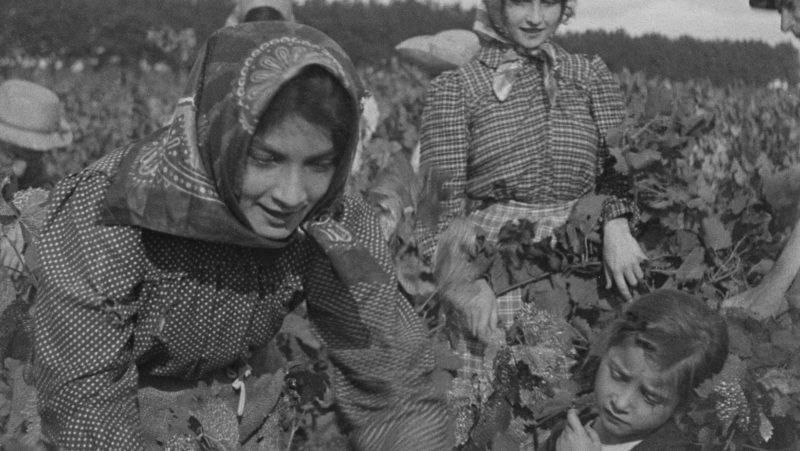THE DOLOMITES IN THE FILM OF ARNOLD FANCK, DER BERG DES SCHICKSALS
THE ART OF COSTUME DESIGN IN SILENT FILM: THE LECTURE BY BETH WERLING, INTRODUCED BY DEBORAH NADOOLMAN LANDIS, ON
MARY PICKFORD AND COSTUME DESIGN
The focus today (Thursday, October 12th) is on Louis Feuillade, with a rarely screened masterpiece from this extraordinarily prolific auteur who made over 800 shorts and medium-length films (two-thirds of which are lost) over the course of a twenty-year career: Vendémiaire (1918/19), screening at the Teatro Verdi at 2.30 PM. Feuillade was the best known exponent of the feuilleton and of the cinematographic serial with Fantômas and Les Vampires, which had a phenomenal success among the public and intellectuals, most especially the Surrealists. Vendémiaire represents a parenthesis of sorts in regard to his serials, and was for the director a sort of homecoming to the wine region of Languedoc where he was raised. The story of the film takes place in the final phase of the First World War, revolving around an officer blinded by a war wound who welcomes other refugees to his estate in exchange for help with the grape harvest. Vendémiaire is an obvious allegory of wine as a source of life but it refers to a period of deprivation and mourning that was still too close to the real tragedies for the public to want to see a film that cut so close to the bone. The movie was not a success and ended up forgotten; only later did its reputation soar, and seeing it today brings back its full force and poetry.
We move from the French countryside to the mountains of the Dolomites with the 9.45 AM screening, Der Berg des Schicksals (1924) by Arnold Fanck, an avid skier and mountaineer who divided his passion for mountain sports with a love for photography. Here he made his fiction feature film debut, putting his hand on all aspects of the production: direction, screenplay and editing. For the leads he recruited the Olympic ski champion Hannes Schneider and the professional mountaineer Luis Trenker who himself became a famous director of mountain films. The restoration by the W. Friedrich Murnau Stiftung was based on the two last copies existing in Germany: one had previously been held at Gosfilmofond in Moscow and the other was part of Leni Riefenstahl’s private collection.
Slapstick returns at 11 AM with a program dedicated to “Odd Couples,” with the Danish feature Højt Paa en kvist (1929), in which the most popular comedy duo in Europe at the time, Pat and Patachon, collaborated for the twenty-fifth time with director Lau Lauritzen, under the aegis of Palladium Film.
This evening’s program at 9 PM is anchored by the uproarious Universal comedy starring Edward Everett Horton and Laura La Plante, Poker Faces (1926) directed by Harry Pollard, presented earlier as our pre-opening event in Sacile, with a score composed by Juri Dal Dan and performed by the Zerorchestra. The film will be preceded by a tribute to Max Linder with some rare outtakes from the Viennese set of his last film Max, der Zirkuskönig (The King of the Circus), screened in Pordenone last year, as well as a short from the Ruritania section, A Truthful Liar (1924), produced by Hal Roach, directed by Hampton Del Ruth, and starring the great Will Rogers as an American ambassador who conquers the most refined Europeans with his simplicity and homespun roughness.
Finally, we want to remind you of the second edition of our annual lecture on Costume Design and Silent Cinema. This year it’s delivered by Beth Werling, historian and exhibition curator, who will speak on “Mary Pickford in 26 Costumes and 5 Golden Curls.” The lecture begins at 5.30 PM in the Teatro Verdi and will be introduced by Deborah Nadoolman Landis, creator of this unique initiative.


 Italiano
Italiano
Recent Comments